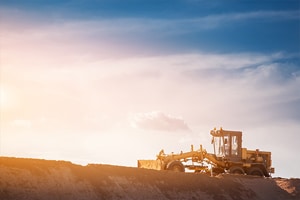
By generating millions of synthetic images of on-site machinery – such as cranes, scissor lifts, bulldozers and dump trucks and analysing such images using artificial intelligence (AI), the technology creates large datasets for training deep neural networks to analyse the use of machinery in a variety of conditions.
In other words, before using an excavator at a building site on a wet day, workers can identify all the safety features of this equipment within a digitised version of the working environment, including rain, clouds, as well as reduced light and visibility.
The technology, which is currently under Australian patent review, was developed by Dr Mehrdad Arashpour and his team of PhD students and postdoctoral researchers in Monash University’s Department of Civil Engineering.
Dr Arashpour said this application had been designed to improve safety, productivity and quality on building sites and other workplaces.
“Operations involving heavy construction equipment are a critical component of most projects. Heavy construction equipment, vehicles and workers are often required to work closely due to spatial limitations and tight schedules, which often leads to suboptimal performance both in terms of safety and productivity,” said Dr Arashpour, Head of Construction Engineering and Management at Monash University.
“Preparing large training datasets for specific tasks is currently a manual process, which is highly time-consuming, labour-intensive, error prone, and subject to privacy concerns.
“Our method randomises various critical features of the scene, such as equipment pose and texture, scene texture and lighting, camera location and field of view, and adds other elements to the scene such as simulated dust and occluding objects.”
Presently, safety compliance training procedures involve placing cameras on site to capture images of the machine in operation. From there, the images are labelled manually, including key points of each piece of equipment.
The generated data set is then used to train the artificial intelligence (AI) models and inferences are made regarding classification of different equipment, pose estimation and activity recognition.
The novel Monash-developed method uses game engine technology to generate CAD models of heavy machinery, such as cranes, dump trucks, scissor lifts and other equipment on site, which are then accurately and automatically annotated.
Dr Arashpour and his team have tested several deep neural networks on the real images of the equipment. The results obtained by training deep neural networks using synthetic images are almost always as accurate as real images.
“As compared to traditional data preparation pipelines, the proposed method does not require any manual annotation, which is a labour-intensive and time-consuming process,” he said.
“Furthermore, synthetically generated datasets are advantageous to manually labelled datasets as they can produce pixel-level annotations for the key points of interest. In contrast, manually annotated datasets are susceptible to human error, and monitoring the quality of annotation is also a cumbersome task.
“Our home-grown technology has the potential to modernise the building and construction industry across the world, and improve safety, quality and productivity.”
Related stories:
- Melbourne Uni launches autonomous vehicle
- VIC trial reveals long road ahead for autonomous vehicles
- Victoria passes legislation to allow self-driving cars on roads


